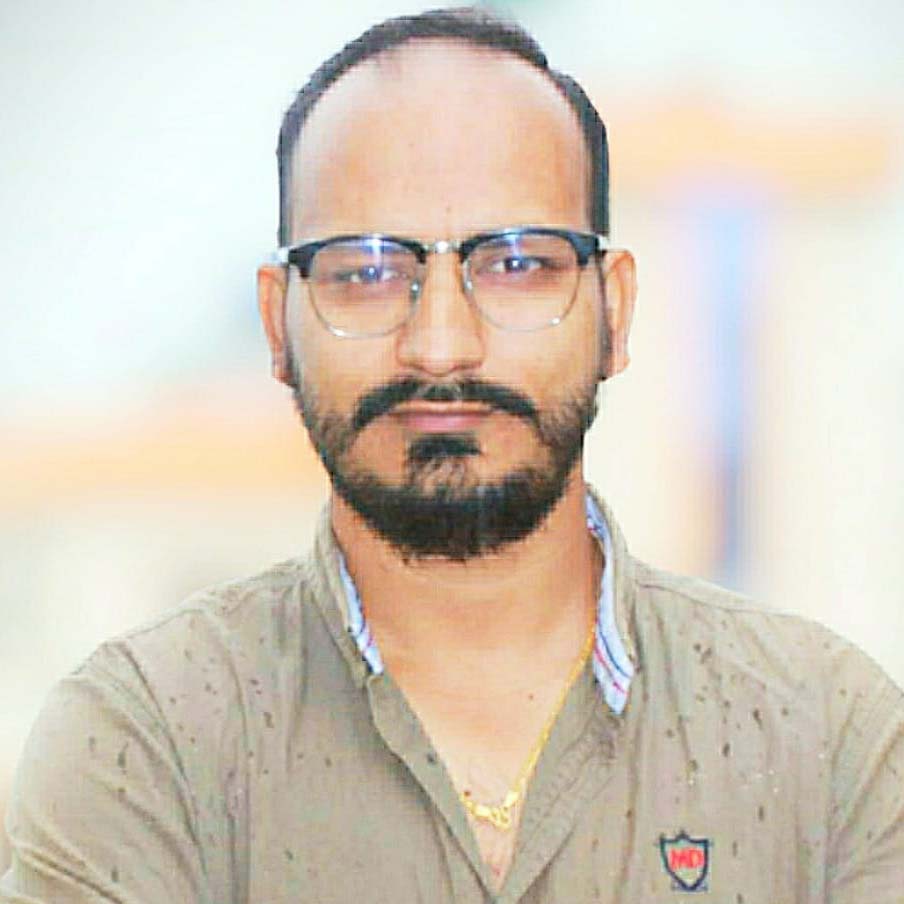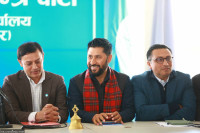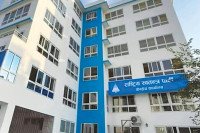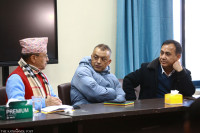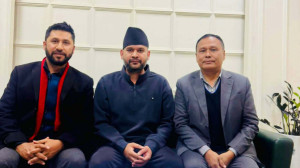Politics
Politicians, experts offer ways to make provinces viable
Congress General Secretary Thapa joins the chorus seeking reforms in the unstable provincial setup.
Purushottam Poudel
Nepali Congress General Secretary Gagan Thapa has joined the group of leaders calling for a constitutional amendment in order to address the underperforming provincial system and the political instability allegedly caused by the mixed electoral system the country constitutionally endorsed nearly a decade ago.
After a change in coalition at the centre began to affect provincial governments, voices for reforming the electoral system through constitutional amendment are growing louder.
Speaking at a programme in Kathmandu on Saturday, Thapa, a general secretary of the largest party in the House of Representatives, argued that reforming the electoral system had become necessary to ensure political stability.
He also said that the provinces’ performance so far shows that the federal system cannot be sustained in its current form.
“By reform in the provincial structure, I do not mean scrapping the federal system altogether, which the country cannot afford,” Thapa told the Post when asked to explain his statement. “The issue of governments’ formation in the provinces has been challenged in court. This is a result of lack of clarity on provincial government formation in the constitution.”
The government formation process in Koshi and Gandaki provinces have been challenged multiple times, and the Supreme Court has many times invalidated the chief ministerial appointment and election processes in the two provinces.
Questions have been raised over the expenditures for running the provincial governments. “To address this issue, we need to downsize the elected representatives’ bodies not only in the provinces but also at the federal level. For that, we need constitutional reform,” Thapa added.
“We bear a collective responsibility to protect and sustain the constitution. This, however, requires some amendments. Reform in the electoral system is as important,” Thapa emphasised.
The provinces followed the same process of government formation practised at the centre and that caused problems, he said. Thapa stressed that amendments to the constitution could address all these issues.
The Congress leader says it is wrong to advocate either for scrapping the federal system altogether or and fully retaining the constitutional provisions on the provinces.
The Rastriya Prajantara Party, which bats for the revival of the Hindu Kingdom, has been demanding the scrapping of the country’s federal structure. The Rastriya Swatantra Party, which was formed two years ago, also wants the provincial structure overhauled. The new party says it wants to downsize the middle layer of the federal system. The party hasn’t participated in the provincial elections.
Former National Assembly member Khim Lal Devkota, who is also an expert on federalism and a columnist at The Post, sees a slim chance of any changes in the federal system even though “it is necessary”.
“I have closely worked with Nepal’s top political leaders. I believe they won’t readily amend the constitution,” Devkota told the Post. “The longer we take to amend the constitution, the more questions there will be on the longevity of the constitution.”
During the Congress Mahasamiti meeting held in February, many leaders raised their voices in favour of filling all seats of the lower house of the federal parliament through direct election.
Instead of electing a section of the lower house under the Proportional Representation (PR) system, the leaders had suggested that the upper house of the parliament be filled exclusively through the PR system. They were of the view that Nepal would not have a stable government unless all the lower house members were directly elected by their constituencies.
Devkota is also of the opinion that Nepal needs to reform the election system. The mixed electoral system should be changed to create an environment for political instability, he said.
In the 275-strong federal lower house, 165 are directly elected, whereas 110 come from the PR category. The upper chamber has 59 members. Of them, 56 are chosen through an electoral college comprising provincial assembly members and the chiefs and deputy chiefs of local units. Each province elects eight members, while three are appointed by the President on the recommendation of the Council of Ministers.
Likewise, among the 550 members in the seven provincial assemblies, 220 are elected under the PR category. This number is large compared to the population size and thus needs to be reduced significantly, say experts.
However, Krishna Pokharel, a professor of political science, blames the political leaders for the current problems of the provinces. Top politicians are using provincial governments and assemblies to place their second- and third-tier leaders. This has burdened the state without yielding any tangible results, he added. Pokharel says this represents a failure of the leadership rather than the federal system.
Since the inception of the provincial system, political parties have appointed chief ministers on a rotational basis, Pokharel told the Post. “It is true that there are operational problems in the provinces, but leaders are more responsible for this than the system.”
Even though the state structure is federal, political parties have yet to adopt the three-tier system within their organisations, he said. “What stops the political parties from giving autonomy to their provincial committees and letting them make decisions regarding the provinces on their own?” Pokharel questioned.
Devkota, however, said two models should be considered to ensure the stability of provincial governments.
The first involves distributing the government leadership positions based on the number of seats won in the election, and the second concerns implementing provisions similar to those at the local government level. According to the first model, the chief minister and other positions are distributed based on the number of seats shared in the provincial assembly elections, and the government is run among the constituent parties on a consensus basis.
As per the second method, the chief minister is directly elected by voters, similar to the election of mayors or chairs at the local units. This makes the chief ministers fully accountable to the people. The chief minister can be removed by a two-thirds majority of the provincial assembly, thus preventing one from being an autocrat.
One of the major concerns is the destabilising linkage of provincial politics with the power equation in Kathmandu. When the coalition at the centre changes, governments in the provinces also change.
The subnational governments changed immediately after the change in coalition partners in Kathmandu on March 4. When Prime Minister Pushpa Kamal Dahal changed ruling partners, the second-largest party in the House of Representatives, CPN-UML, joined the government while the largest force, the Congress, was ousted from power. The changes at the centre immediately triggered changes in the provinces as well.




 16.09°C Kathmandu
16.09°C Kathmandu